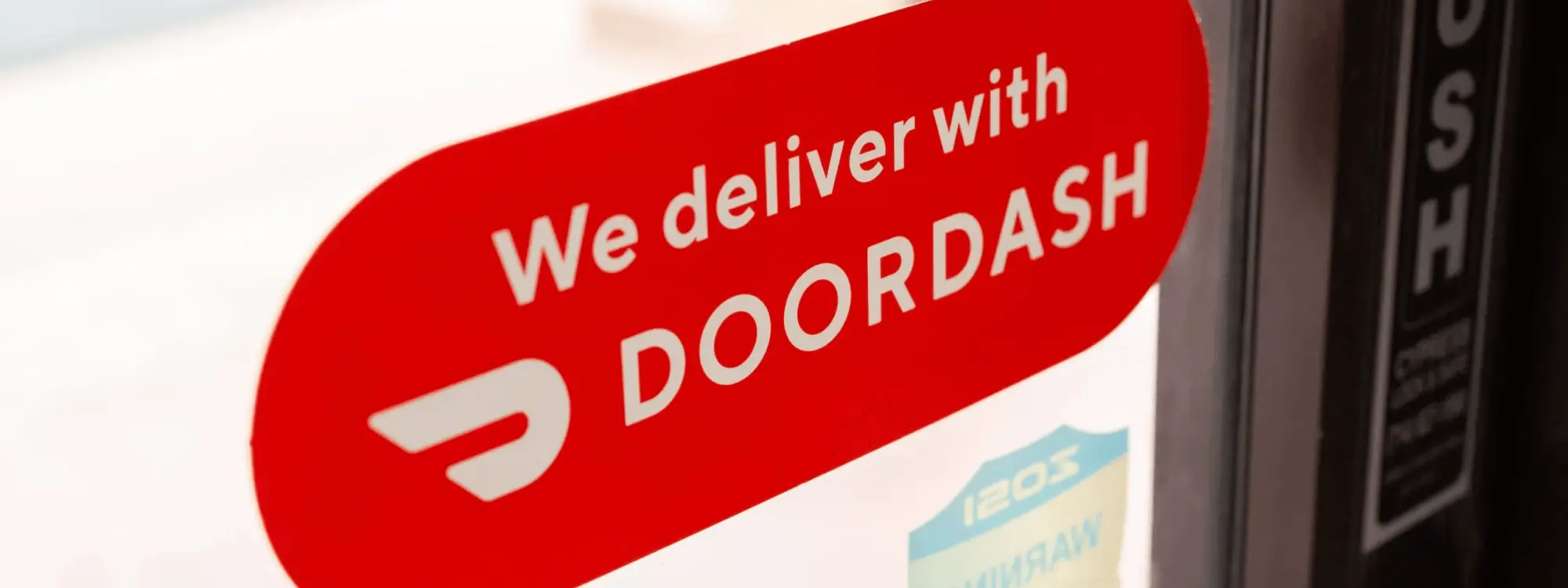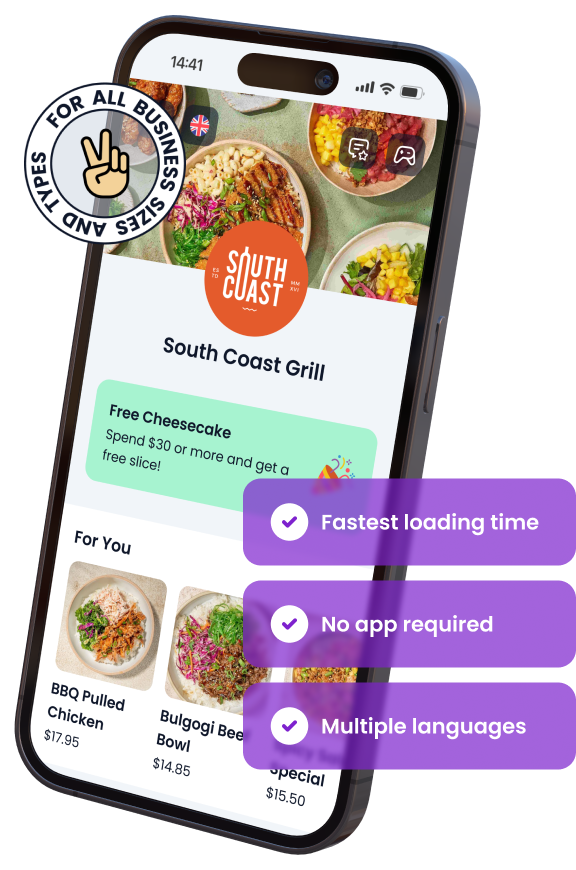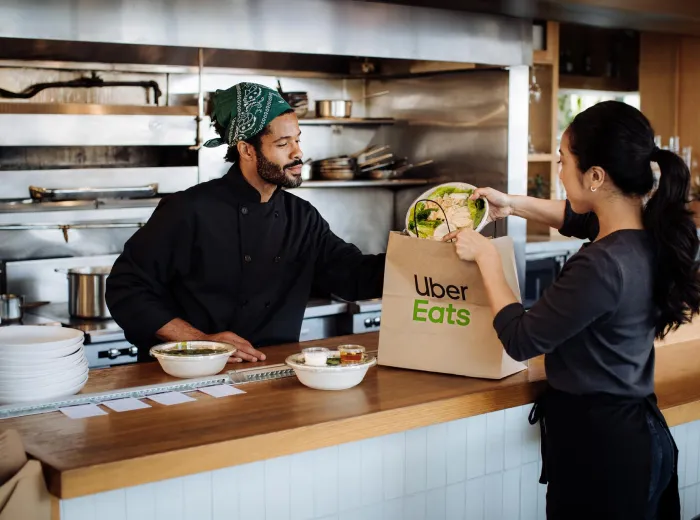

DoorDash Fees and Commissions for Restaurants: Detailed 2025 Guide
DoorDash has become a vital player in the food delivery landscape, connecting millions of customers with restaurants across the globe. For many restaurant owners, partnering with DoorDash offers an enticing opportunity to boost sales, expand customer reach, and increase online visibility. However, with these benefits come fees and commissions that directly impact the profitability of each order. Understanding these charges is crucial for restaurant owners to make informed decisions about their pricing strategies and overall business operations.
In 2025, DoorDash continues to offer a range of pricing structures for restaurants, from basic delivery fees to more complex commission-based models. Whether you’re a small family-run restaurant or part of a larger franchise, navigating these fees can be tricky but necessary to ensure you’re not sacrificing your margins. Knowing how these fees are structured, how to calculate them, and how they stack up against other delivery platforms is essential for keeping costs in check while maximizing the benefits of working with DoorDash.
In this detailed guide, we’ll explore everything restaurant owners need to know about DoorDash fees and commissions in 2025. From breaking down the different fee types to providing tips on reducing costs, this article will serve as a comprehensive resource for any restaurant owner considering DoorDash as part of their delivery strategy.
Would you like to listen our deep-dive conversation about this article?
What Are DoorDash Fees for Restaurants?
When partnering with DoorDash, restaurants are subject to various fees that are designed to cover the cost of delivering orders, marketing services, and platform maintenance. These fees, while necessary for the services DoorDash provides, can add up quickly and impact a restaurant’s bottom line if not properly managed. Understanding the different types of fees DoorDash charges is crucial for restaurant owners to accurately gauge their costs and set their prices accordingly.
Definition of DoorDash Fees
DoorDash fees refer to the various charges imposed on restaurants in exchange for using the platform’s delivery and marketing services. These fees cover delivery logistics, platform access, and promotional activities to attract more customers.
How Does DoorDash Charge Restaurants?
DoorDash charges restaurants based on a combination of fees, including a percentage of each order’s total value. These charges typically fall into two main categories:
- Fixed fees such as service fees for each transaction.
- Variable fees such as commissions, which are based on the order’s subtotal.
Types of DoorDash Fees to Be Aware Of
DoorDash imposes several fees that restaurant owners should be aware of. Here are the most common ones:
- Delivery Fee
- This is a fee charged to cover the cost of delivering the food from the restaurant to the customer.
- Typically ranges between 10-20% of the order’s total cost, depending on the agreement.
- Service Fee
- A general service charge that covers platform usage and payment processing.
- Often charged as a flat rate per order or a percentage.
- Marketing Fee
- If a restaurant participates in DoorDash promotions or paid advertising, this fee is applied.
- This is usually optional, but can help boost visibility and increase order volume.
Understanding these fee structures can help restaurant owners better manage their expenses and adjust their pricing to maintain profitability.
Understanding DoorDash Commission Rates
Commission rates are one of the most significant costs for restaurants using DoorDash. These rates are typically charged as a percentage of each order and are the primary way DoorDash earns revenue from restaurant partnerships. As commission fees directly impact your profit margins, it’s essential to understand how they work and what factors influence them.
What Is a Commission Fee?
A commission fee is a percentage of the total order amount that DoorDash takes from each transaction. This fee compensates DoorDash for the platform, delivery logistics, and access to a large customer base.
Standard Commission Rates in 2025
In 2025, DoorDash offers different commission rate tiers depending on the services the restaurant opts for. The most common commission rates include:
- Basic Plan (15%)
- This tier covers essential delivery services with minimal marketing or support options.
- Plus Plan (25%)
- A more comprehensive plan that includes enhanced visibility and marketing support in addition to delivery.
- Premier Plan (30%)
- The highest tier, offering the most benefits such as priority customer support, lower delivery fees for customers, and boosted placement in search results.
Factors Influencing Commission Rates
The commission rates a restaurant pays can vary depending on several factors:
- Restaurant Location
- Restaurants in highly competitive or high-demand areas may have different commission rates compared to those in less busy regions.
- Order Volume
- Restaurants with higher order volumes may negotiate lower commission rates, as they contribute more to DoorDash’s revenue stream.
- Exclusive Partnerships with DoorDash
- Restaurants that enter into exclusive agreements with DoorDash, choosing it as their sole delivery platform, may receive lower commission rates in exchange for their loyalty.
Understanding how these commissions are structured allows restaurant owners to make informed decisions about which DoorDash plan is most suitable for their business, helping to balance costs with the benefits of increased exposure and delivery capabilities.
How to Calculate Your DoorDash Costs
Calculating your total DoorDash costs is crucial for maintaining healthy profit margins. Since DoorDash fees and commissions can vary depending on factors like order volume, location, and plan tiers, it’s important to have a clear understanding of how much you’re paying and how it impacts your bottom line. Knowing how to calculate these costs will help you make data-driven decisions about pricing, menu adjustments, and operational changes.
Step-by-Step Guide to Fee Calculations
To get an accurate picture of your DoorDash costs, follow this simple step-by-step process:
- Start with the Order Subtotal
- Begin by identifying the subtotal of the customer’s order, excluding taxes and tips.
- Add DoorDash Commission Rate
- Apply the commission rate based on your chosen plan (e.g., 15%, 25%, or 30%). For example, if the subtotal is $50 and your commission rate is 25%, the commission fee would be $12.50.
- Include Any Additional Fees
- Add the applicable service fees, which might be either a flat fee or a percentage of the order subtotal. For instance, a $3 service fee per order or 3% of the subtotal.
- Factor in Optional Marketing Costs
- If you participate in DoorDash’s paid promotions or advertising, include any related marketing fees in the total. These are often a flat percentage or tiered based on ad spend.
- Calculate the Delivery Fee
- Some plans allow you to pass part of the delivery fee to the customer, but if not, add this to your total cost. This fee typically ranges from 10-20% of the order total.
- Sum Up All Costs
- Add together all the fees and commissions to find the total cost of using DoorDash for that order.
Understanding the Total Cost of Using DoorDash
The total cost of using DoorDash goes beyond the visible fees, as each fee and commission directly impacts your profit margins. Here’s how it affects your bottom line:
- Breakdown of Fees and Commissions
- For example, on a $50 order with a 25% commission, a $3 service fee, and a $5 delivery fee, your total costs might come out to $20.50.
- Impact on Profit Margins
- After calculating your total fees, you can subtract them from the order subtotal to determine how much profit you actually make per order. For instance, on a $50 order, after deducting the $20.50 in fees, you’re left with $29.50, which you’ll use to cover food costs, labor, and other overhead.
By following this structured approach to calculating DoorDash costs, restaurant owners can gain better control over their financial performance and decide whether adjustments need to be made to menu prices, promotional participation, or delivery methods.
Is DoorDash Worth the Cost for Restaurants?
The decision to partner with DoorDash involves balancing the potential benefits with the associated costs. While DoorDash can drive increased sales and provide access to a large customer base, the fees and commissions may significantly impact your profit margins. Determining whether DoorDash is worth the cost depends on a number of factors, including your restaurant’s goals, financial situation, and ability to handle delivery in-house.
Benefits of Partnering with DoorDash
Partnering with DoorDash offers several advantages that can help restaurants grow their business. These include:
- Increased Customer Reach
- DoorDash provides access to a vast network of customers who prefer the convenience of delivery. Many restaurants see a surge in online orders after joining the platform.
- Boost in Online Orders
- Restaurants that partner with DoorDash typically see a boost in sales, especially from customers who may not have otherwise dined in or ordered directly.
- Marketing and Promotion Opportunities
- DoorDash offers restaurants the chance to participate in targeted marketing campaigns, boosting visibility and increasing order volume.
Downsides of DoorDash Fees and Commissions
While the platform offers numerous benefits, the associated costs can eat into your profits, especially for smaller establishments. Here are some downsides to consider:
- Impact on Small Restaurants
- Smaller restaurants may struggle with DoorDash’s fees, as they often don’t have the order volume to absorb the high commission rates without cutting into their profits.
- Lower Profit Margins
- The combination of delivery fees, commissions, and marketing costs can reduce a restaurant’s profit margins significantly. Some restaurants may even find it difficult to break even on certain orders, especially when offering discounted delivery fees to attract more customers.
- Potential for Over-Reliance on Third-Party Platforms
- Relying too heavily on DoorDash for your delivery business could make it harder to develop your own customer base or in-house delivery service, leaving you vulnerable to changes in DoorDash policies or fees.
Ultimately, deciding whether DoorDash is worth the cost depends on your restaurant’s business model, ability to absorb fees, and whether the increased reach and convenience outweigh the loss in profit margins. Each restaurant should carefully weigh these factors to determine if DoorDash aligns with their overall goals.
How to Lower Your DoorDash Fees
For many restaurant owners, DoorDash fees can be a substantial cost. However, there are strategies to lower these fees, improve your profit margins, and make the most of your partnership with the platform. By negotiating rates, taking advantage of specific programs, and making smart adjustments to your operations, you can effectively reduce the burden of DoorDash fees.
Negotiating Better Commission Rates
While DoorDash has set commission rates, some restaurant owners have successfully negotiated lower fees. This is especially possible for restaurants that generate high order volumes or are in competitive markets.
- When and How to Negotiate with DoorDash
- Restaurants with strong order volume can use this as leverage to request a reduced commission rate.
- Establishments in highly competitive or high-demand areas may also have the opportunity to negotiate better terms.
- If you’re thinking of switching to DoorDash from another platform or signing an exclusive partnership, DoorDash may offer lower rates to secure the deal.
Joining the DoorDash Partnership Program
DoorDash offers special partnership programs that can help reduce costs for restaurants that commit to using the platform exclusively or provide other incentives.
- Exclusive Partnerships
- Restaurants that agree to partner with DoorDash exclusively may receive lower commission rates or additional marketing support.
- Priority in Search Results
- Exclusive partners often receive priority placement in search results and marketing campaigns, which can increase order volume and reduce reliance on paid promotions.
Reducing Marketing Fees and Other Costs
Marketing fees on DoorDash can add up, especially if you participate in paid promotions or visibility campaigns. However, there are ways to reduce these costs:
- Optimize Organic Visibility
- Focus on building strong customer reviews and maintaining high ratings, which can help boost your visibility on the platform without needing to spend on paid promotions.
- Targeted Promotions
- If you do participate in paid marketing, be strategic about when and how you use these services. Target high-traffic days or specific times to maximize your return on investment.
- Adjust Menu Pricing
- You can adjust your menu pricing slightly to offset the fees, ensuring that you still cover your costs without appearing too expensive to customers.
By taking proactive steps, you can make DoorDash a more cost-effective solution for your restaurant. Lowering fees and commission rates can help you maintain profitability while still taking advantage of the platform’s benefits.
How DoorDash Fees Compare to Other Platforms
As the food delivery industry grows, restaurants have a range of platforms to choose from, including DoorDash, Uber Eats, and Grubhub. Each platform offers different fee structures and commission rates, making it important for restaurant owners to compare and evaluate which service is the most cost-effective for their business. Understanding how DoorDash fees stack up against its competitors can help you make an informed decision about which platform to partner with.
DoorDash vs. Uber Eats: Fee Breakdown
Both DoorDash and Uber Eats are popular platforms, but they differ in terms of fees and commissions. Here’s how they compare:
- Commission Rates
- DoorDash typically charges a 15% to 30% commission per order, depending on the plan.
- Uber Eats also has commission rates that vary between 15% and 30%, with similar tiers for service levels.
- Additional Fees
- DoorDash has marketing and service fees, which can increase the overall cost of using the platform.
- Uber Eats charges additional fees such as delivery and promotional costs, which can also add up.
- Which Platform Has Higher Fees?
- Generally, DoorDash and Uber Eats are quite similar in terms of fees, though Uber Eats may charge slightly more for premium visibility and promotions.
DoorDash vs. Grubhub: Which Is More Affordable?
Grubhub is another major player in the food delivery space, and its fee structure can vary from DoorDash:
- Commission Rates
- Grubhub typically charges between 10% and 20% in commission, making it potentially cheaper than DoorDash for some restaurants.
- Marketing and Service Fees
- Grubhub also charges for marketing and promotions, but its fees are often lower than those of DoorDash.
- Customer Reach and Visibility
- While Grubhub may offer lower fees, DoorDash often provides better visibility and a larger customer base, particularly in urban areas.
Comparing Customer Reach vs. Cost on Each Platform
Choosing between DoorDash and other platforms isn’t just about fees; it’s also about the customer base and visibility each platform offers:
- DoorDash
- Known for its large reach, especially in suburban and rural areas, DoorDash gives restaurants access to a broad customer base.
- Uber Eats
- Uber Eats has a strong presence in urban areas, particularly in cities where its rideshare service is popular.
- Grubhub
- Grubhub has a long-established presence, especially in larger cities and among office workers who regularly order delivery.
While DoorDash fees might be higher in some cases, the platform’s extensive reach and marketing power often justify the costs, especially for restaurants looking to grow their delivery business. Restaurant owners should carefully weigh the balance between fees and customer reach to decide which platform provides the best return on investment.
How DoorDash Fees Affect Menu Pricing
One of the key challenges for restaurants using DoorDash is figuring out how to adjust their menu pricing to account for the platform’s fees. DoorDash’s commission rates and service fees can significantly impact your profit margins, which makes it necessary to carefully consider pricing strategies. Striking the right balance between covering costs and staying competitive in the market is essential for long-term success.
Adjusting Your Menu Prices to Account for DoorDash Fees
Raising your menu prices to account for DoorDash fees can help offset the impact on your profit margins, but it needs to be done thoughtfully. Here are a few strategies for adjusting your prices:
- Increase Prices on Delivery-Only Items
- Consider adjusting prices slightly for items listed on your DoorDash menu compared to your in-house menu. Many restaurants increase delivery prices by 10-15% to cover the fees without alienating in-store customers.
- Use Bundled Meals
- Bundling items together into meal deals can justify slightly higher prices, while still providing perceived value to the customer. This strategy also helps you sell more items per order, further absorbing DoorDash fees.
- Highlight High-Margin Items
- Promote and prioritize high-margin items that can withstand the additional cost of fees without drastically impacting profitability. Think of dishes that are inexpensive to prepare but can be sold at a premium.
Passing Fees to Customers
Some restaurants choose to pass a portion of DoorDash fees directly to the customer. This can be done by incorporating the fees into the final price or by adding a service charge to delivery orders.
- Transparent Service Charges
- Some restaurants include a visible service charge or delivery fee on top of the menu price. This allows customers to see the reason for the higher cost and understand it’s related to third-party delivery fees.
- Slight Price Increases
- A small price increase across the entire menu, rather than on specific items, can help evenly distribute the cost of DoorDash fees. For example, a $0.50 to $1 increase per item can cover a significant portion of the commission without being too noticeable to customers.
Finding the Balance Between Competitive Pricing and Profit
While adjusting prices is necessary to cover DoorDash fees, it’s also important to remain competitive in the crowded delivery market. Here are ways to maintain this balance:
- Monitor Competitor Pricing
- Regularly check the prices of similar restaurants in your area to ensure you remain competitive. Pricing too high might drive customers to competitors, while pricing too low could harm your profits.
- Offer Promotions Strategically
- Instead of consistently lowering prices, consider offering occasional promotions or discounts during off-peak times. This can attract customers without permanently cutting into your profit margins.
Example of Price Adjustments for Popular Menu Items
Here’s a practical example of how a restaurant might adjust menu pricing:
- Original In-House Menu Pricing:
- Cheeseburger: $10
- Fries: $3
- Soda: $2
- Adjusted Delivery Pricing on DoorDash (to cover fees):
- Cheeseburger: $11.50
- Fries: $3.50
- Soda: $2.50
In this case, the restaurant has slightly increased the prices of each item to cover DoorDash’s 25% commission, ensuring that the profit margin remains intact even with delivery costs factored in.
By thoughtfully adjusting menu prices, restaurants can maintain profitability without losing customers to higher fees. The goal is to remain transparent with customers while ensuring your business stays financially healthy in a competitive delivery environment.
Should You Use DoorDash or Offer Your Own Delivery?
Deciding whether to use DoorDash or invest in your own delivery service is a critical choice for many restaurant owners. Each option comes with its own set of advantages and disadvantages. DoorDash provides access to a large customer base, but it comes with significant fees. In contrast, managing your own delivery service can give you more control over operations but may require higher upfront investment. The right choice depends on your restaurant’s specific needs, resources, and long-term goals.
Pros and Cons of Using DoorDash for Delivery
Using DoorDash offers convenience, but the fees can cut into your profit margins. Here are some key points to consider:
- Pros of Using DoorDash
- Access to a Large Customer Base: DoorDash connects your restaurant with millions of potential customers, helping you increase your reach without extensive marketing efforts.
- No Upfront Costs: You don’t need to invest in infrastructure or hire a dedicated delivery team. DoorDash handles the logistics, allowing you to focus on food preparation.
- Marketing Support: DoorDash offers marketing and promotional tools to help boost visibility and drive orders.
- Cons of Using DoorDash
- High Fees and Commissions: As previously discussed, DoorDash charges commission fees ranging from 15% to 30%, which can reduce your profits significantly.
- Lack of Control Over Delivery: You have little control over the delivery process, including customer service, delivery times, and order accuracy, which can affect your brand reputation.
- Over-Reliance on Third-Party Platforms: Relying solely on DoorDash can make your business vulnerable to fee increases or policy changes.
Building Your Own In-House Delivery Team
Offering your own delivery service allows you to maintain control, but it comes with operational challenges and upfront investments.
- Pros of In-House Delivery
- Control Over the Customer Experience: You can control the entire delivery process, ensuring that food quality, packaging, and delivery times meet your standards.
- No Third-Party Fees: By managing delivery in-house, you eliminate the commission fees that DoorDash charges, potentially increasing your profit margins.
- Brand Consistency: You can create a seamless customer experience from order placement to delivery, helping you build stronger relationships with customers.
- Cons of In-House Delivery
- Higher Upfront Costs: Setting up your own delivery service requires an investment in vehicles, drivers, and technology (such as an ordering platform).
- Logistical Challenges: Managing delivery operations can be complex and time-consuming, especially during peak hours or in busy locations.
- Limited Customer Base: Without a platform like DoorDash, you’ll need to invest more in marketing to attract customers and compete with third-party delivery services.
Cost Comparison: DoorDash Fees vs. In-House Delivery Costs
When deciding between DoorDash and in-house delivery, comparing the costs is essential. Here’s a breakdown of some of the key cost considerations for each option:
- DoorDash Costs
- Commission Fees: 15%-30% of each order.
- Service Fees: Additional flat or percentage-based fees for using the platform.
- Marketing Fees: Optional fees if you choose to participate in promotions.
- In-House Delivery Costs
- Labor Costs: Wages for drivers, potentially including benefits and insurance.
- Vehicle Costs: Purchasing or maintaining vehicles, or reimbursing employees for using their own vehicles.
- Technology Costs: Investment in an ordering platform and customer service support for delivery issues.
While DoorDash’s commission fees can cut into profits, in-house delivery requires significant investment in infrastructure and staffing. The decision comes down to whether you want more control over the delivery process and are willing to handle the added complexity of managing it internally.
By weighing the pros and cons of each option, restaurant owners can determine whether DoorDash or an in-house delivery service better suits their operational needs and long-term business goals.
Frequently Asked Questions About DoorDash Fees
Restaurant owners often have many questions about how DoorDash fees work and how they impact profitability. This section answers some of the most commonly asked questions, providing clarity on the structure of DoorDash fees and offering insights into managing these costs effectively.
How Much Is the Average DoorDash Fee in 2025?
In 2025, the average DoorDash commission fee ranges from 15% to 30% of the order total, depending on the plan a restaurant chooses. Additionally, restaurants may face service fees and optional marketing costs, which can further increase the total cost per order.
Can DoorDash Fees Be Deducted from Taxes?
Yes, DoorDash fees may be deductible as business expenses. Commissions, service fees, and any marketing costs incurred while using DoorDash can typically be written off as part of your operational expenses. Be sure to consult with an accountant or tax professional to properly categorize these fees.
What Happens If DoorDash Fees Change?
DoorDash periodically updates its pricing models and commission rates. If DoorDash changes its fee structure, restaurants are usually notified in advance. It’s important to keep an eye on any updates and review your partnership agreement to ensure you’re fully aware of any potential impacts on your business.
Are There Any Hidden Fees I Should Be Aware Of?
There are no “hidden” fees per se, but some costs may not be immediately obvious. For instance, if you participate in DoorDash marketing programs, additional costs could apply depending on the level of promotion you choose. Delivery fees may also vary, and in some cases, DoorDash may charge a higher rate for certain high-demand periods or exclusive marketing arrangements.
How Can I Lower My DoorDash Fees?
You can reduce DoorDash fees by negotiating lower commission rates, especially if you have a high order volume or are willing to sign an exclusive agreement. Additionally, optimizing your menu pricing and minimizing participation in optional marketing promotions can help keep costs under control.
Does DoorDash Charge for Cancellations?
If an order is canceled by the customer before the food has been prepared, you typically won’t be charged any fees. However, if you’ve already started preparing the order, DoorDash may deduct a small fee from the refund to cover the preparation costs.
How Are DoorDash Fees Different for Pickup vs. Delivery Orders?
For pickup orders, DoorDash typically charges a lower commission fee compared to delivery orders, as there are no delivery logistics involved. This can make offering a pickup option through DoorDash a more cost-effective way to use the platform without incurring high delivery fees.
By understanding these frequently asked questions, restaurant owners can gain better clarity on how DoorDash fees work and take steps to manage these costs more effectively.
Partnering with DoorDash can offer restaurants significant opportunities for growth, especially by expanding their customer reach and increasing online orders. However, the associated fees and commissions require careful consideration to ensure profitability. By understanding how DoorDash charges restaurants, comparing it to other platforms, and exploring ways to reduce costs, restaurant owners can make informed decisions that align with their business goals. Whether you choose to rely on DoorDash or explore in-house delivery options, managing these fees effectively is key to maintaining a healthy balance between increased sales and sustainable profit margins in the competitive world of food delivery.
ABOUT THE AUTHOR
Erkin Coban
Your Customers Deserve The Best
And we got Menuviel for them.
The fastest and easy-to-use online QR menu with 12+ unique features. Choose Menuviel and elevate your service quality to the next level.
Use free for the first 30 days.

In This Article

Free AI Tools for Restaurants
TRY NOW ➜

Add your food delivery app links
Make it easy for customers to find your restaurant by adding direct links to popular food delivery apps.







